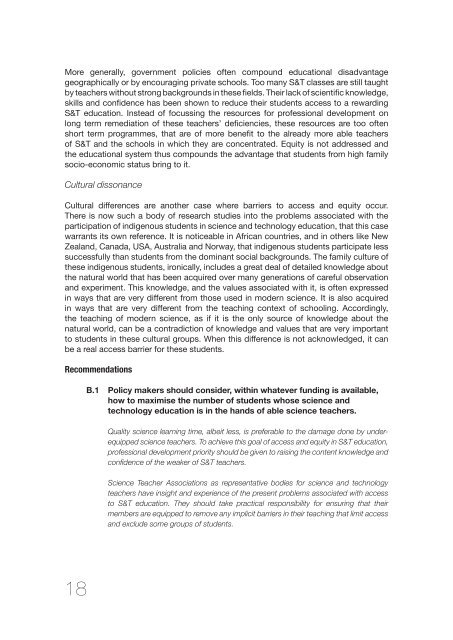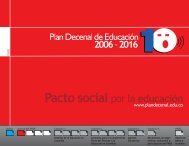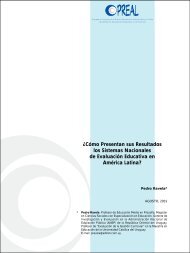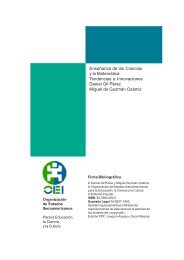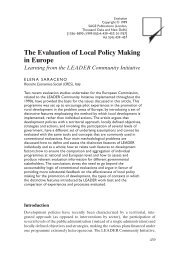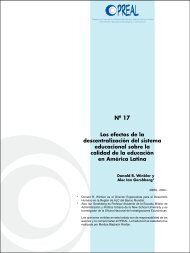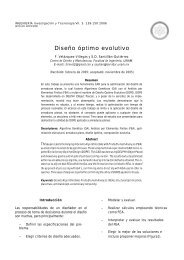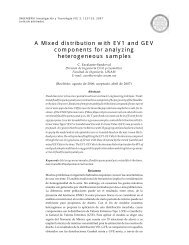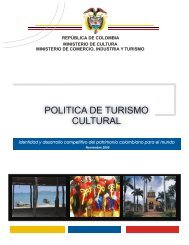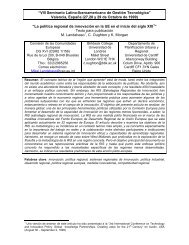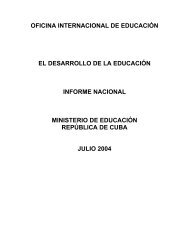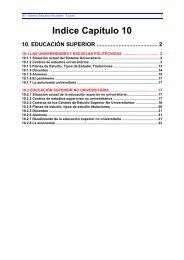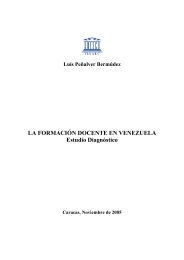Science education policy-making: eleven emerging issues; 2008 - OEI
Science education policy-making: eleven emerging issues; 2008 - OEI
Science education policy-making: eleven emerging issues; 2008 - OEI
Create successful ePaper yourself
Turn your PDF publications into a flip-book with our unique Google optimized e-Paper software.
More generally, government policies often compound <strong>education</strong>al disadvantage<br />
geographically or by encouraging private schools. Too many S&T classes are still taught<br />
by teachers without strong backgrounds in these fields. Their lack of scientific knowledge,<br />
skills and confidence has been shown to reduce their students access to a rewarding<br />
S&T <strong>education</strong>. Instead of focussing the resources for professional development on<br />
long term remediation of these teachers’ deficiencies, these resources are too often<br />
short term programmes, that are of more benefit to the already more able teachers<br />
of S&T and the schools in which they are concentrated. Equity is not addressed and<br />
the <strong>education</strong>al system thus compounds the advantage that students from high family<br />
socio-economic status bring to it.<br />
Cultural dissonance<br />
Cultural differences are another case where barriers to access and equity occur.<br />
There is now such a body of research studies into the problems associated with the<br />
participation of indigenous students in science and technology <strong>education</strong>, that this case<br />
warrants its own reference. It is noticeable in African countries, and in others like New<br />
Zealand, Canada, USA, Australia and Norway, that indigenous students participate less<br />
successfully than students from the dominant social backgrounds. The family culture of<br />
these indigenous students, ironically, includes a great deal of detailed knowledge about<br />
the natural world that has been acquired over many generations of careful observation<br />
and experiment. This knowledge, and the values associated with it, is often expressed<br />
in ways that are very different from those used in modern science. It is also acquired<br />
in ways that are very different from the teaching context of schooling. Accordingly,<br />
the teaching of modern science, as if it is the only source of knowledge about the<br />
natural world, can be a contradiction of knowledge and values that are very important<br />
to students in these cultural groups. When this difference is not acknowledged, it can<br />
be a real access barrier for these students.<br />
Recommendations<br />
B.1 Policy makers should consider, within whatever funding is available,<br />
how to maximise the number of students whose science and<br />
technology <strong>education</strong> is in the hands of able science teachers.<br />
Quality science learning time, albeit less, is preferable to the damage done by underequipped<br />
science teachers. To achieve this goal of access and equity in S&T <strong>education</strong>,<br />
professional development priority should be given to raising the content knowledge and<br />
confi dence of the weaker of S&T teachers.<br />
<strong>Science</strong> Teacher Associations as representative bodies for science and technology<br />
teachers have insight and experience of the present problems associated with access<br />
to S&T <strong>education</strong>. They should take practical responsibility for ensuring that their<br />
members are equipped to remove any implicit barriers in their teaching that limit access<br />
and exclude some groups of students.<br />
18


